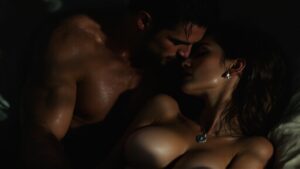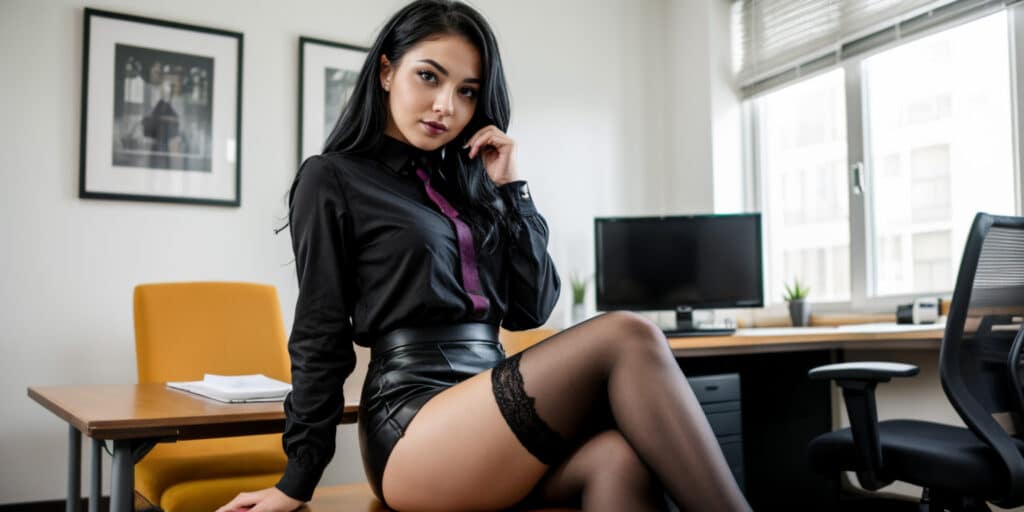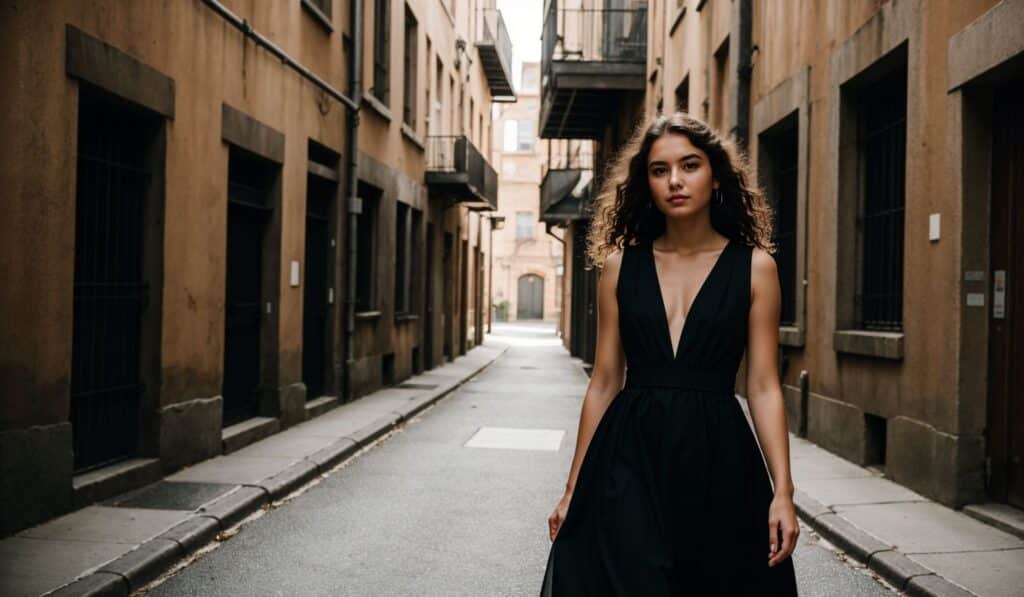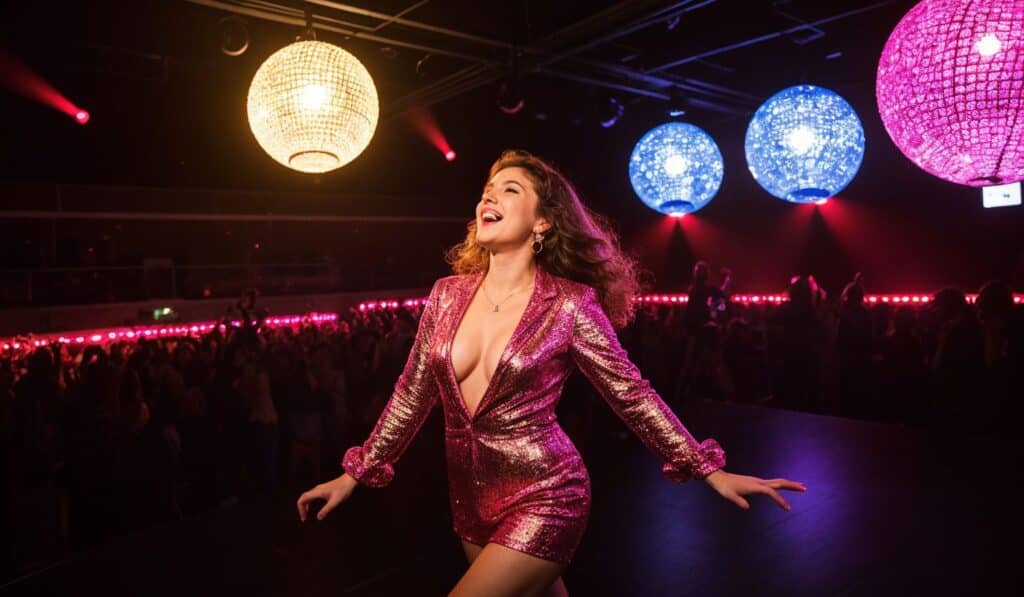Stepping into the world of vintage pin-up fashion is like opening a vibrant, seductive time capsule. I’m here to guide you through its iconic symbols, vibrant colors, unique silhouettes, and the legendary icons who’ve made it timeless. We’ll also explore how modern interpretations keep this style alive and kicking. So buckle up, we’re about to dive deep into the sassy, empowering universe of pin-up fashion. Its enduring appeal promises to be a thrilling ride!
Key Takeaways
- Pin-up fashion originated in the early 20th century and evolved over time, with influences from World War II and societal upheaval.
- Pin-up fashion is characterized by iconic symbols and aesthetics such as pin-up tattoos, high-waist shorts, polka dots, and the celebration of different body types.
- Accessories play a significant role in pin-up fashion, including jewelry, eyewear, and hair accessories.
- Influential pin-up icons like Betty Grable, Marilyn Monroe, Bettie Page, and Rita Hayworth have had a lasting impact on pin-up fashion and can be seen in various aspects of popular culture.
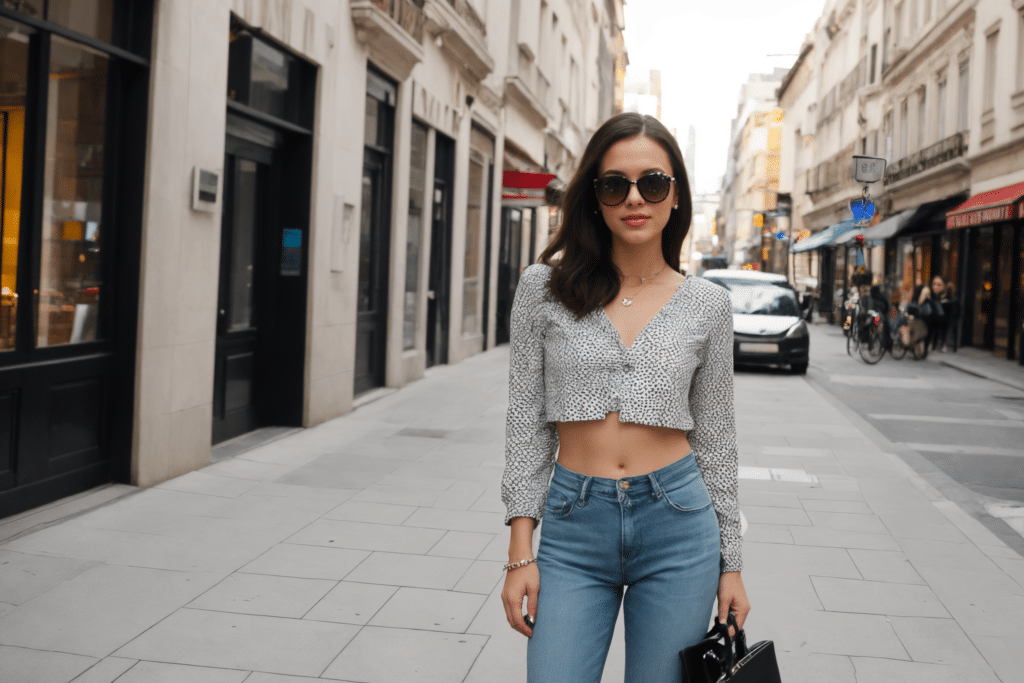
Origins of Vintage Pin-Up Fashion
I’m diving right into the colorful origins of vintage pin-up fashion, a style that burst onto the scene in the early 20th century. Pin-up photography played a pivotal role in popularizing this trend, with its glamourous depictions of women in playful, yet provocative poses. These images, often seen on calendars or magazine covers, were a celebration of femininity and sexuality, albeit in a safe and non-threatening manner.
The influence of World War II on pin-up fashion cannot be overlooked. Soldiers stationed away from home found comfort and a sense of normalcy in the images of these pin-up models. The fashion was practical yet alluring, with high-waisted skirts, fitted blouses, and modest bathing suits that reflected the era’s social norms and restrictions.
However, it wasn’t just about looking good. The pin-up style also served as a subtle form of resistance, empowering women to embrace and express their sexuality in a safe way during a time of societal upheaval. It’s this intricate blend of aesthetics, social dynamics, and historical context that makes the origins of vintage pin-up fashion so fascinating.
Iconic Symbols in Pin-Up Aesthetics
So, what are the iconic symbols that primarily define the aesthetics of pin-up fashion? Let’s delve into this question by looking at four crucial elements that contribute significantly to this style.
- Pin-up Tattoos: These are a signature aspect of pin-up aesthetics. They often feature women in classic pin-up poses, showcasing their beauty and confidence.
- High-Waist Shorts: These shorts, often in vibrant colors and patterns, embody the playful yet sexy vibe of pin-up fashion. They emphasize the waistline, a key feature in this style.
- Polka Dots: This print is a staple in pin-up fashion, often found on dresses and swimwear. It adds a touch of femininity and fun to the look.
- Pin-up Photography: This form of photography captures the essence of pin-up aesthetics. The focus is often on the woman’s curves, with a touch of innocence and flirtation.
These symbols are not just aesthetic elements, but they also represent the empowerment and liberation of women that pin-up fashion underscores. They are a reminder of the style’s historical significance, making it more than just a fashion trend.
Importance of Color and Prints
In the realm of vintage pin-up fashion, you can’t overlook the pivotal role of color and prints. These elements aren’t mere aesthetic choices, but are deeply rooted in color psychology and communicate nuanced messages about the wearer’s personality and mood.
Red, for instance, often symbolizes passion and boldness, while blue can evoke feelings of calmness and stability. A vibrant yellow dress could signify optimism, while a green one might suggest balance and harmony. These color choices are also significant in pin-up fashion, where the aim is not just to look good, but also to radiate a certain aura or energy.
Print variations further enhance this dynamic. Polka dots, for instance, were a popular choice in the 1950s and suggested a playful, youthful vibe. Meanwhile, floral prints often communicated femininity and romanticism. Stripes, on the other hand, spoke of elegance and sophistication.
In essence, the colors and prints in vintage pin-up fashion aren’t just about creating visual interest. They’re about embodying certain attitudes and feelings, and allowing the wearer to express themselves in a safe, non-verbal manner. Understanding this can help us appreciate the depth and complexity of this iconic fashion style.
Understanding the Pin-Up Silhouette
One key aspect I’ve noticed in vintage pin-up fashion is the distinctive silhouette it creates. This silhouette promotes Body Positivity and Feminine Empowerment, as it celebrates all body types and accentuates natural curves.
To understand the pin-up silhouette, consider these 4 elements:
- High-Waisted Bottoms: They cinch at the smallest part of the waist, enhancing the hourglass figure that’s a signature of pin-up fashion.
- Fitted Tops: These are designed to flatter, not flatten, the bust. They’re a celebration of natural beauty, embracing Body Positivity.
- A-line Skirts: They flare out from the waist, creating a balanced look that complements the fitted top.
- Seamed Stockings: They elongate the legs, adding to the overall femininity of the ensemble.
These elements work together to create a silhouette that is not just about aesthetics, but also about making women feel confident, empowered, and safe in their own skin. It’s a fashion style that’s about celebrating the female form, not hiding or altering it. In essence, the pin-up silhouette is a strong statement of Feminine Empowerment.
The Role of Accessories
Let’s now delve into the significant role that a myriad of accessories play in perfecting the look of vintage pin-up fashion. First, the Jewelry Influence cannot be overstated. Pearls and chunky floral brooches were the epitome of pin-up glamour, adding a touch of elegance and femininity to any outfit. Second, the Eyewear Impact was profound. Cat-eye glasses were a popular choice, lending a sense of mystery and allure while also providing practical vision correction.
Here’s a table highlighting the importance of these accessories:
| Accessory | Impact | Safety Note |
|---|---|---|
| Jewelry | Added elegance and femininity | Always ensure jewelry is secure |
| Eyewear | Provided allure and practicality | Choose glasses that fit well |
I can’t ignore the role of hair accessories either. From bandanas to flower clips, these items helped pin-up girls achieve their iconic hairstyles while adding a pop of color. When choosing accessories, it’s essential to remember the safety aspect. Ensure your jewelry is secure, glasses fit well, and hair accessories don’t cause discomfort.
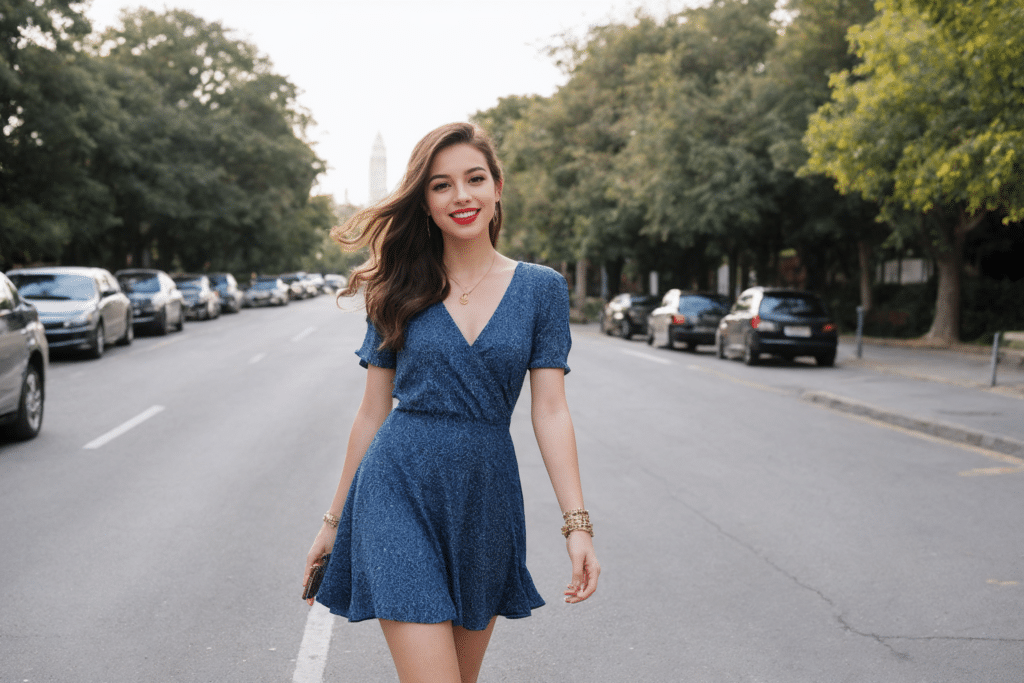
Influential Pin-Up Icons
Moving on from accessories, I can’t help but marvel at the iconic women who made vintage pin-up fashion what it is today. They’ve become emblematic of the pin-up photography influence, shaping the genre’s aesthetics and its cultural impact.
Here’s a list of four such influential icons:
- Betty Grable: Known for her million-dollar legs, Grable was the epitome of the wholesome, girl-next-door image, which was a cornerstone of pin-up’s cultural impact in the 1940s.
- Marilyn Monroe: With her breath-taking beauty and charisma, Monroe embodied the glamorous, sexy side of pin-up fashion.
- Bettie Page: Often dubbed the ‘Queen of Pin-ups’, Page’s risqué style played a significant role in the evolution of pin-up fashion, pushing boundaries and challenging societal norms.
- Rita Hayworth: This Hollywood starlet’s sultry appeal and fiery red hair left an indelible mark on pin-up fashion.
These women didn’t just wear the clothes; they owned them, lending their unique personality to each outfit. Their influence continues to resonate, shaping not only the world of fashion but also societal perceptions of beauty and femininity. They are testament to the enduring power of pin-up fashion and its ongoing relevance today.
Modern Interpretations of Pin-Up Style
Often, I find myself marveling at how contemporary fashion frequently draws inspiration from these timeless pin-up styles, reinterpreting them for the modern age. Modern interpretations of the pin-up style are not limited to clothing, but also extend to accessories and body art, such as pin-up tattoos. These tattoos often showcase iconic pin-up imagery, merging nostalgia with a modern, edgy twist.
Modern media’s influence cannot be ignored in this evolution. It’s instrumental in promoting the fusion of vintage pin-up aesthetics with current fashion trends. Celebrities and influencers, adorned in updated pin-up styles, have a significant impact on fashion-conscious individuals. This influence has led to a resurgence of pin-up styles in mainstream fashion.
The pin-up style’s modern interpretations are a testament to its enduring appeal. Today’s pin-up fashion retains its charm, while offering a fresh perspective that resonates with the current generation. It’s fascinating to see how these vintage styles have been adapted to fit contemporary tastes, reflecting our ongoing appreciation for the past, even as we move forward. This blending of old and new is what keeps pin-up fashion relevant and exciting.
The Enduring Appeal of Pin-Up Fashion
I’m constantly struck by the enduring appeal of pin-up fashion, a style that continues to captivate audiences, even decades after its inception. There’s a certain magnetism to it, a blend of nostalgia and rebellion, innocence and allure. But what exactly contributes to this enduring appeal?
- Pin-Up Psychology: The allure of pin-up fashion lies in its ability to evoke a sense of nostalgia, harking back to an era where glamour and elegance were paramount.
- Feminist Perspectives: Pin-up fashion, paradoxically, can be both a symbol of female objectification and empowerment. For some, it’s about reclaiming femininity and owning one’s sexuality.
- Timeless Aesthetics: The classic silhouettes, bold prints, and vibrant colors never go out of style. They offer a sense of elegance and sophistication that’s hard to resist.
- Cultural Impact: Pin-up fashion has had a profound impact on popular culture, influencing music, movies, and modern fashion trends.

